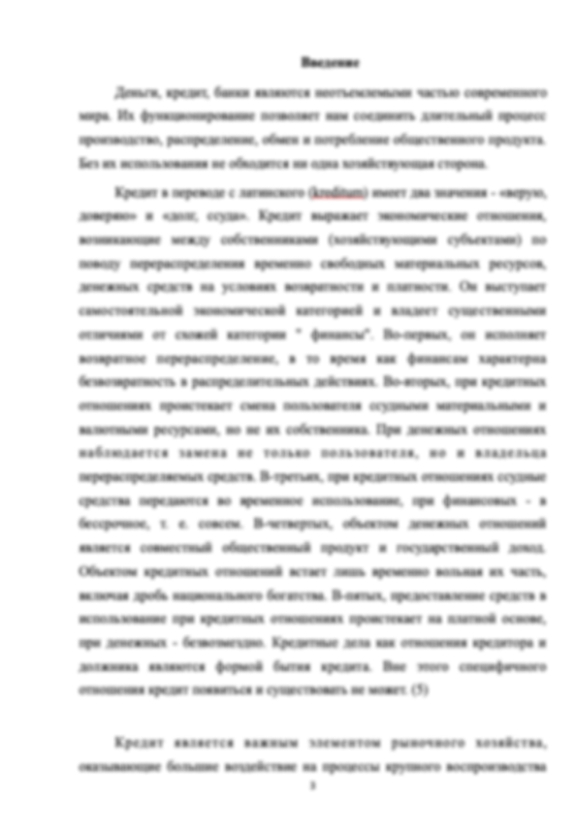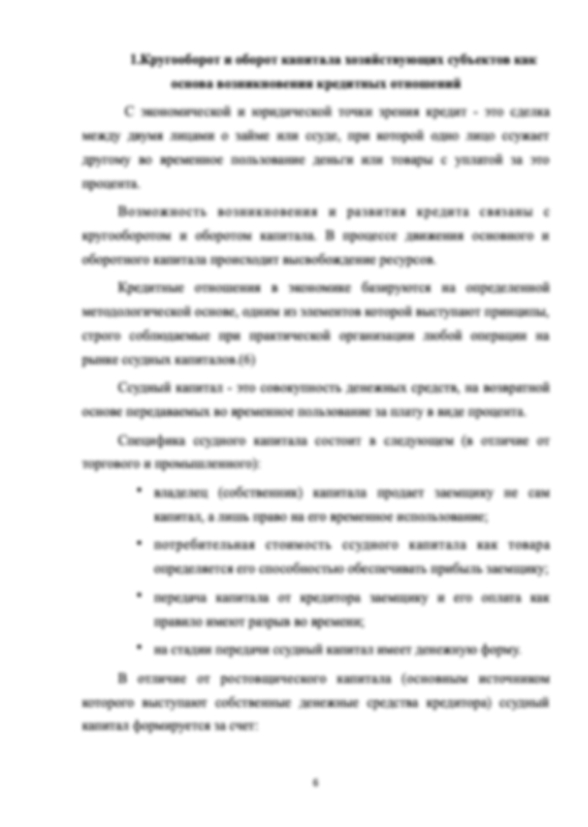Работа выполнена качественно и буквально за считанные дни. Анна - настоящий талант. Человек, целиком и полностью посвятивший себя науке. Регулярно появляется онлайн, производит все необходимые доработки вплоть до защиты. И самое главное - выполняет работу с неподдельным интересом. Мне крупно повезло работать с таким профессионалом. Огромное Вам спасибо!
Информация о работе
Подробнее о работе

Semantic changes of a word meaning in the english language
- 55 страниц
- 2012 год
- 480 просмотров
- 2 покупки
Гарантия сервиса Автор24
Уникальность не ниже 50%
Фрагменты работ
CONTENTS
INTRODUCTION 4
CHAPTER 1. SEMANTIC CHANGES OF A WORD MEANING: THEORETICAL ASPECTS 8
1.1 Semantic changes: essence of the term 8
1.2 Types of a word semantic change: general information 14
1.3 Semantic change: traditional classifications 23
1.4 Principles of semantic changes 29
1.5 Causes of semantic change 31
CHAPTER 2. WORD SEMANTIC CHANGE: PRACTICAL ANALYSIS 37
2.1 Discussion questions for semantic change of a word 37
2.2 Semantic change within word lexical change 45
CONCLUSION 51
LIST OF USED LITERATURE 55
LIST OF USED DICTIONARIES 56
23. Sihler, Andrew L. Language History: An Introduction. Birmingham, 1982.
24. The evolution of lexicology. Chicago: University of Chicago Press, 1985.
25. Traugott, C.Elizabeth and Dasher, B.Richard. Semantic Change. Cambridge: Cambridge University Press, 2002.
26. Traugott, C.Elizabeth. The role of the language development. Paper presented at the Twelfth International Conference on Historical Linguistics. Manchester, August, 1995.
27. Werner H. Change of meaning: A study of semantic processes through the experimental method. 1954.
LIST OF USED DICTIONARIES
28. Hornby A.S. The Oxford Advanced Learner’s Dictionary. - Fifth Edn. - Oxford: Oxford university press, 1995.
29. Sommer, Elyse. Mataphors Dictionary. Oxford: Oxford University Press, 2001.
30. The American Heritage Dictionary of the English Language. - Fourth Edition. - Houghton Mifflin Company, 2000.
31. Warner, Nancy. Mataphors Dictionary. Cambridge: Cambridge University Press, 2004.
32.
...
1.1 Semantic changes: essence of the term
The phenomenon of semantic change was studied not only by linguists, but also by psychologists. Psychologists have noticed that children are very creative in inventing new words and in inventing new meanings of the old words. That phenomenon was studied by such psychologists as Clark, Nelson, Boerman, etc. Clark’s main contribution to the study of semantic development was that she put forward some general predictions about which meanings should be acquired sooner or later by the child and why.
As Clark writes «when the child first begins to use identifiable words, he does not know their full (adult) meaning: he has only partial entries for them in the lexicon. The acquisition of semantic knowledge, then, will consist of adding to the lexical entry of the word until the child’s entry for that word corresponds to the adults.»
Not only words have meaning properties (ambiguity), they also bear various meaning relations to one another.
...
1.2 Types of a word semantic change: general information
The simplest type of semantic change is a shift. For instance the Latin verb arrivare derives ultimately from ad ripam ‘at the shore’, but has long lost this meaning. But even such an innocuous case can be classified. A closer look at all changes in meaning shows that alterations in meaning can be classified according to type. There are some basic types of semantic change which on the one hand refer to the range of a word’s meaning and on the other, to the way the meaning is evaluated by speakers:
1. Semantic expansion. Here a word increases its range of meaning over time. For instance in Middle English bridde was a term for ‘small bird’, later the term bird came to be used in a general sense and the word fowl, formally the more general word was restricted to the sense of ‘farmyard birds bred especially for consumption’, cf. German ‘Geflügel’.
...
1.3 Semantic change: traditional classifications
Semantic change has traditionally been looked at from a variety of angles. Before we discuss the various classifications of meaning change corresponding to these angles, it is important to realize two things:
• The traditional classifications cannot be applied to all changes.
• The classifications are not mutually exclusive: sometimes we can apply two or even more labels to a single change, depending on which aspect of the change we choose to use as the basis of our classification.
Semantic changes have been classified by different scientists. The most complete classification was suggested by a German scientist Herman Paul in his work «Prinzipien des Sprachgeschichte». It is based on the logical principle.
...
1.4 Principles of semantic changes
The basic components of semantic change are the two processes:
a) F a > F a b Form F with sense a acquires an additional sense b;
b) F a b > F b Form F with senses a and b loses sense a.
Process (b) must operate on a polysemous form. If we assume that polysemy must arise by process (a), process (b) is dependent on process (a), but not vice versa. Accordingly, the process of sense gain (as in (a)) is the sine qua non of semantic change.
This work reviews proposals that in some semantic changes, implicature is the mechanism by which sense b initially comes to be associated with F a. The establishment of b as a sense of F is attributed to conventionalization of the implicature.
The notion of implicature is not precisely defined, and may be compared to a concept with prototypical and peripheral instances.
...
1.5 Causes of semantic change
In comparison with classifications of semantic change the problem of their causes appears neglected. Opinions on this point are scattered through a great number of linguistic works and have apparently never been collected into anything complete. And yet a thorough understanding of the phenomena involved .in semantic change is impossible unless the whys and wherefores become known. This is of primary importance as it may lead eventually to a clearer, interpretation of language development. The vocabulary is the most flexible part of the language and it is precisely its semantic aspect that responds most readily to every change in the human activity in whatever sphere it may happen to take place.
The causes of semantic changes may be grouped under two main headings:1) linguistic and 2) extralinguistic ones.
2.1 Discussion questions for semantic change of a word
1. Narrowing, widening, pejoration, melioration. Each of the words below, given with its modern meaning, has undergone a change in the signified to which it applies:
1.1.
...
2.2 Semantic change within word lexical change
Since traditional approaches to historical semantics and lexical change deal either with semantic change, word formation or loans, they seem to suggest that these processes are basically unrelated phenomena. But in fact, the contrary is the case: Lexical change concerns in principle semantic as well as morphological and stratificational innovation. Innovative speakers try to attain their goal by means of rhetorical figures which often imply not only semantic innovation, but also morphological and sometimes loan processes. A multitude of cases make this evident. Whereas for instance the English verb to grasp in the sense of 'to understand' has arisen from a highly expressive metaphor as a pure semantic figure, the corresponding German expression begreifen 'to understand' is the result of a metaphorical derivation on the basis of greifen 'to grip'.
...
Conclusion
All types of semantic change depend on some comparison of the earlier (whether extinct or still in use) and the new meaning of the given word. This comparison may be based on difference between the conceptual expression, or referents in the real word that are pointed out, on the type of psychological association at work, on evaluation of the later by the speaker, on lexico-grammatical categories, or possibly on some other features.
M. Breal and H. Paul offered us a diachronic classification of semantic change. Breal was probably the first scientist who emphasized the fact that in general usage into some special sphere of communication, a word as a rule undergoes some sort of specialization of meaning. When the meaning is narrowed, the word can name fewer objects, at the same time the content of a word is being enriched, as it includes a greater number of relevant features, by which it is characterized. This phenomenon is frequently called «narrowing of meaning».
...
List of used LITERATURE
1. Антрушина Г.Б., Афанасьева О. В., Морозова Н. Н. Лексикология английского языка: Учеб. пособие для студентов. — М.: Дрофа, 1999. – на англ.яз.
2. Арнольд И.В. Лексикология современного английского языка: Учеб. для ин-тов и фак. иностр. яз. — 3-е изд., перераб. и доп. — М.: Высш. шк., 1986. — на англ.яз.
3. Aijmer, Karin. The semantic development. London, 1985.
4. Atlas, Jay David & Stephen C.Levinson. Informativeness, and logical form: radical pragmatics (Revised Standard Version). Peter Cole ed., 1981.
5. Brown, Roger. Words and Things. New York, 1958.
6. Bybee, Joan & William Pagliuca. Radical pragmatics. New York: Academic Press, 1987.
7. Cruise, A. Lexical semantic. Cambridge: Cambridge University press, 1995.
8. Galperin I.R. An Essay in Stylistic Analysis. Moscow, 1968.
9. Geeraerts, Dirk. Semantics and Word-formation. Berlin and New York: Mouton, 1997.
10. Gentner Dedre.
...
LIST OF USED DICTIONARIES
28. Hornby A.S. The Oxford Advanced Learner’s Dictionary. - Fifth Edn. - Oxford: Oxford university press, 1995.
29. Sommer, Elyse. Mataphors Dictionary. Oxford: Oxford University Press, 2001.
30. The American Heritage Dictionary of the English Language. - Fourth Edition. - Houghton Mifflin Company, 2000.
31. Warner, Nancy. Mataphors Dictionary. Cambridge: Cambridge University Press, 2004.
32. http://www.etymonline.com/
33. http://www.indo-european.nl/index2.html
34. http://www.myetymology.
...
1. Антрушина Г.Б., Афанасьева О. В., Морозова Н. Н. Лексикология английского языка: Учеб. пособие для студентов. — М.: Дрофа, 1999. – на англ.яз.
2. Арнольд И.В. Лексикология современного английского языка: Учеб. для ин-тов и фак. иностр. яз. — 3-е изд., перераб. и доп. — М.: Высш. шк., 1986. — на англ.яз.
3. Aijmer, Karin. The semantic development. London, 1985.
4. Atlas, Jay David & Stephen C.Levinson. Informativeness, and logical form: radical pragmatics (Revised Standard Version). Peter Cole ed., 1981.
5. Brown, Roger. Words and Things. New York, 1958.
6. Bybee, Joan & William Pagliuca. Radical pragmatics. New York: Academic Press, 1987.
7. Cruise, A. Lexical semantic. Cambridge: Cambridge University press, 1995.
8. Galperin I.R. An Essay in Stylistic Analysis. Moscow, 1968.
9. Geeraerts, Dirk. Semantics and Word-formation. Berlin and New York: Mouton, 1997.
10. Gentner Dedre. Metaphor as structural mapping: The relational shift. London, 1988.
11. Griberg S. I. Basic lexicology. Moscow, 1980.
12. Kaplan, Edith and Bernard. The Acquisition of Word Meaning: A Developmental Study, 1952.
13. Keil L. Word and its meaning. Cambridge: Cambridge University press, 1996.
14. Kuharenko V.A. Stylistics of the modern English language. M., 1971.
15. Kulin S.V. English Lexicology. Moscow, 1994.
16. Lehmann, Christian. Semantics: Synchronic variation and diachronic change. Lingua estile, 1985.
17. Lewis, Diana M. Rhetorical motivations for the emergence of discourse particles, with special reference to English of course. Particles. Belgian Journal of Linguistics, 2003.
18. Mednikova E.M. Seminars in English Lexicology. Moscow: Vyshaja shkola, 1978.
19. Nerlich, Brighitte. Semantic Change And Semantic Development. Internet: www.le.ac.uk/psychology/htm/10lk
20. Powell, Mava-Jo. The systematic development. 1992.
21. Rinaburg R.A. Course in Modern English Lexicology. Moscow, 1976.
22. Semantic change. Papers from the 7th International Conference on Historical Linguistics (ICHL 7), Amsterdam/Philadelphia: John Benjamins, Bybee, Joan, Revere Perkins & William Pagliuca. 1994.
23. Sihler, Andrew L. Language History: An Introduction. Birmingham, 1982.
24. The evolution of lexicology. Chicago: University of Chicago Press, 1985.
25. Traugott, C.Elizabeth and Dasher, B.Richard. Semantic Change. Cambridge: Cambridge University Press, 2002.
26. Traugott, C.Elizabeth. The role of the language development. Paper presented at the Twelfth International Conference on Historical Linguistics. Manchester, August, 1995.
27. Werner H. Change of meaning: A study of semantic processes through the experimental method. 1954.
LIST OF USED DICTIONARIES
28. Hornby A.S. The Oxford Advanced Learner’s Dictionary. - Fifth Edn. - Oxford: Oxford university press, 1995.
29. Sommer, Elyse. Mataphors Dictionary. Oxford: Oxford University Press, 2001.
30. The American Heritage Dictionary of the English Language. - Fourth Edition. - Houghton Mifflin Company, 2000.
31. Warner, Nancy. Mataphors Dictionary. Cambridge: Cambridge University Press, 2004.
32. http://www.etymonline.com/
33. http://www.indo-european.nl/index2.html
34. http://www.myetymology.com/
Форма заказа новой работы
Не подошла эта работа?
Закажи новую работу, сделанную по твоим требованиям


